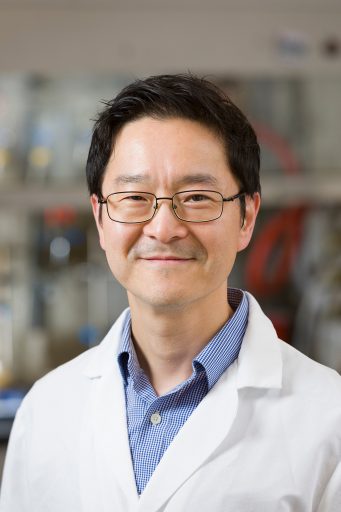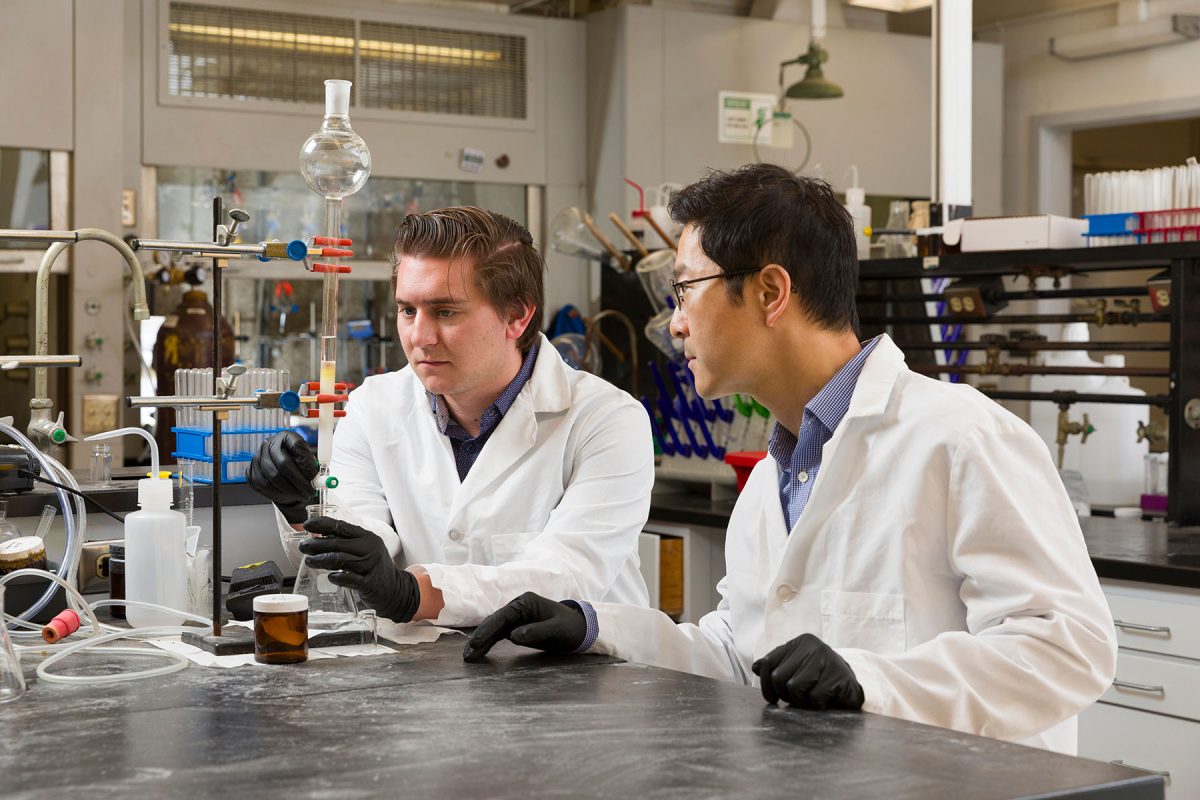Adhesives are everywhere, from the tape used in households to the bonding materials in vehicles and electronics. The search for stronger, more adaptable adhesives is ongoing and may come down to adding a dash of salt to two special polymer ingredients known as polyzwitterions, or PZIs.
New research from a FAMU-FSU College of Engineering team led by Hoyong Chung, an associate professor in the Department of Chemical and Biomedical Engineering, shows a new way to create adhesives by using the natural attraction between positively and negatively charged materials. The work was recently published in Journal of the American Chemical Society.
“We want to create stronger and more versatile adhesives using a strategy involving electrostatic interactions,” Chung said. “Our research centers around two special polymers, known as PZIs, with the goal of getting them to bond more effectively.”
The research team was interested in how the shape of the polymer affects its stickiness, comparing bottlebrush polymers (which have branches coming off the main chain) to straight-chain (linear) polymers. These two differently shaped polymers can be engineered to improve their adherence properties.

One of the study’s key findings is that by simply adding sodium chloride – table salt – the strong but brittle polymers are transformed to be strong and flexible. Most adhesives are either strong or can stretch a lot, but it’s difficult to find adhesives that do both. The amount of salt is key to making the adhesive strong but stretchy.
“The initial key to our discovery lies in the sophisticated and precise design and synthesis of multifunctional polymers,” Chung said. “This new polymer could have wide-reaching impacts across several industries, offering a way to tailor the toughness and flexibility of adhesives with precision. The finding challenges previously held beliefs about adhesion and salt.”
Chung and his team’s discovery lays the groundwork for creating better industrial adhesives and highlights the importance of electrostatic interactions in developing new materials. The findings provide a promising step in their goal of crafting ideal adhesives for a myriad of uses. The study will continue, focusing on developing biomedical tissue adhesives with drug delivery, imaging and disease diagnosis functions.
Chung collaborated on this study with Biswajit Saha, a postdoctoral researcher at the FAMU-FSU College of Engineering and Jacob Boykin, a graduate student. Saha is the first author on the publication.
“Our discovery shows that adding salt could be a key to making an adhesive that is both strong and flexible,” Saha said. “We believe that the study provides a steppingstone toward the long-term goal of developing ideal adhesives.”
The research was funded through Florida A&M University by a $763,457 four-year grant from the National Science Foundation.

